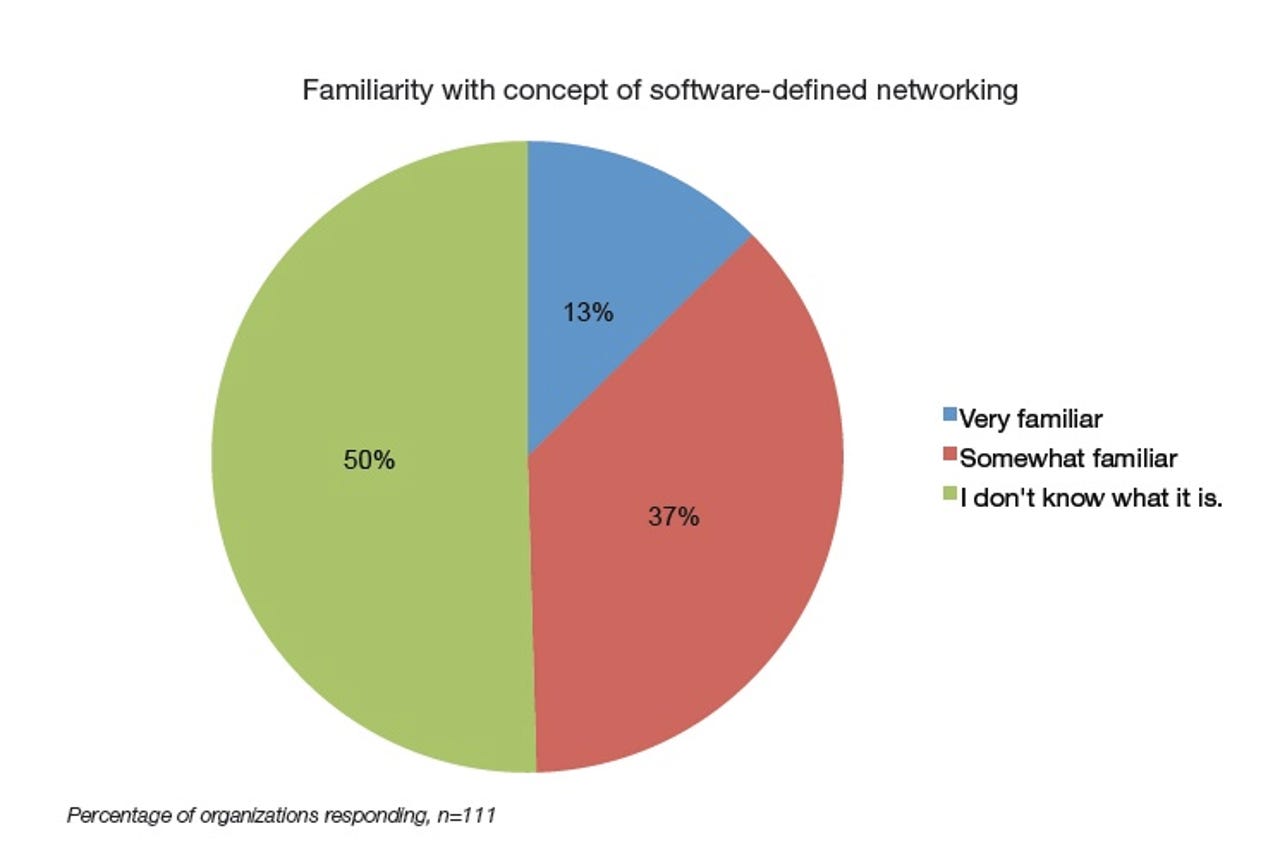Research: IT leaders slow to embrace software-defined networking


Software-defined networking (SDN) is more than just the latest techie hype. It's playing an ever-increasing role among organizations, yet a TechRepublic survey in April revealed that at least 50 percent of the respondents were unfamiliar with SDN.
Download the full "Research: Leaders share software-defined networking's benefits, obstacles, favored vendors" report.
It's important to become familiar with SDN because of the benefits it can provide. Traditional network management typically requires setting up each network-attached device individually. For example, configuring a virtual local area network access control list on a set of Cisco switches necessitates logging into each and making the necessary adjustments. While this approach has worked somewhat successfully in the past, it can become time consuming when organizations add BYOD and numerous cloud services to their networks.
SDN can help because the objective of network management is to allow various devices, whether company-, vendor-, or employee-owned, to connect to networks with access and usage constraints based on the who-what-when-where-how-why of each session. This requires consistent application of policies across all devices. Further, an administrator making a policy change should not have to spend hours making individual device changes, and those changes must be consistent across the enterprise. This is the role of SDN. It provides consistent, relatively fast network management by enabling network-wide changes from a single management console.
The TechRepublic survey asked 111 respondents about the new technologies they planned to implement during the next 12 months. As seen in the figure below, SDN wasn't their first choice, but this wasn't a surprise since half of survey respondents were unfamiliar with SDN. But among those at least somewhat familiar with SDN, it's possible that 64 percent plan to implement it over the next year.
Many organizations reported a plan to implement SDN, but very few have actually done so, with only 5 percent reporting implementation, as seen in the figure below. It is interesting that 56 percent of respondents are interested in SDN in the next year, which means it is not likely to make it into their 2014 budget.
The TechRepublic survey focuses on several SDN-related topics:
- What is SDN
- Future implementation plans
- Business drivers
- Methods of integrating SDN into network infrastructure
- Cloud services management
- Why organizations choose not to implement SDN
- Favored vendors
Read the full "Research: Leaders share software-defined networking's benefits, obstacles, favored vendors" report to find out more about the current state of SDN. The survey reveals that, while providing much promise, SDN is still a burgeoning technology. Use the TechRepublic report to plan your own implementation and learn about what works and what doesn't work from other IT leaders who adopted it early.
TechRepublic, which is ZDNet's sister site, and the premium site TechRepublic Pro provide information that IT leaders need to solve today's toughest IT problems and make informed decisions. Visit TechRepublic Pro for information on becoming a member.